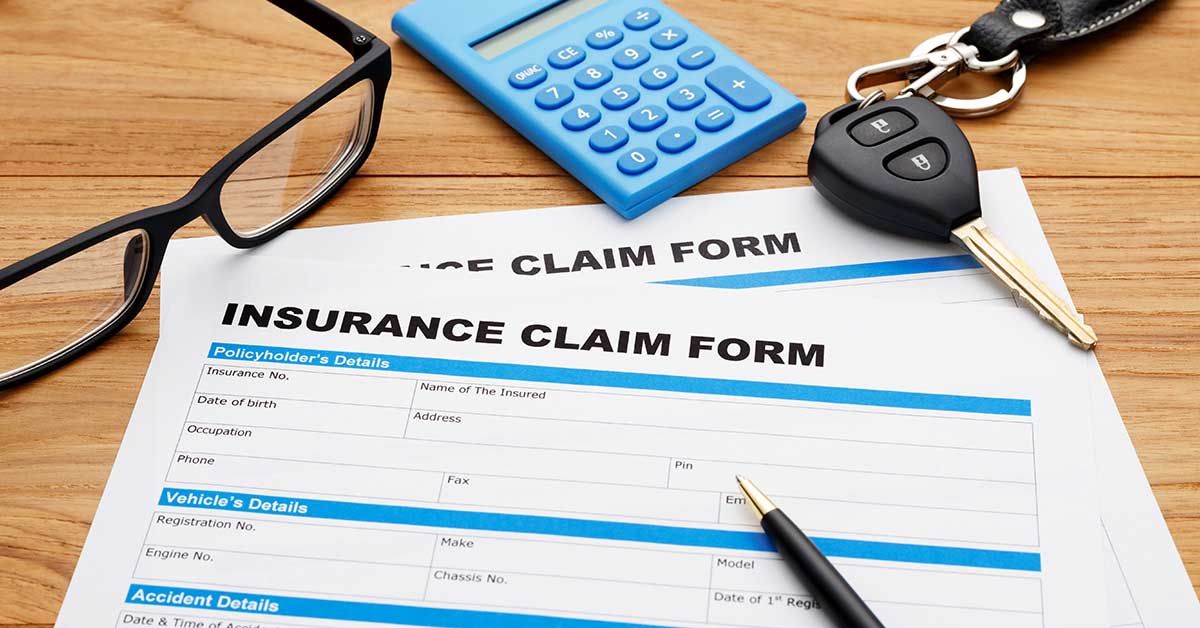Welcome to the Ultimate Guide to Liability Insurance Claims ! If you’ve found yourself in a situation where you need to file a liability insurance claim, you may be feeling overwhelmed and unsure of what to expect. Understanding the process and knowing what steps to take can help alleviate some of that stress and ensure a smoother experience.
In this comprehensive guide, we will cover everything you need to know about liabilities insurance claims, from the basics of liability insurance to the various types of claims, the steps to take after an incident, and what to expect when dealing with your insurance provider.
So let’s dive in and equip you with the knowledge you need to navigate the world of liability insurance claims confidently.
What is Liability Insurance?
Liability insurance is a type of insurance coverage that protects individuals and businesses from financial loss in the event that they are found legally responsible for causing harm to another person or damaging their property. It provides coverage for legal defence costs, settlements, and judgments. Liability insurance is essential because accidents happen, and it’s impossible to predict when you may find yourself facing a claim. There are different types of liability insurance coverage available, including general liabilities insurance, professional liability insurance, product liability insurance, and more. Understanding the type of coverage you have is crucial when it comes to filing a liability insurance claim.
Types of Liability Claims
Liability claims can arise in various situations, and it’s important to understand the different types of claims you may encounter. Some common types of liability claims include personal injury claims, property damage claims, and product liability claims. Personal injury claims typically involve bodily harm caused to another person due to your actions or negligence. Property damage claims involve damage to someone else’s property caused by you or your business activities. Product liability claims arise when a product you manufacture, distribute, or sell causes harm to a consumer. To better understand these types of claims, let’s explore a few examples and scenarios.
Imagine you own a small restaurant, and a customer slips and falls on a wet floor, injuring themselves. This would be considered a personal injury claim. Or perhaps you accidentally cause a fire in your rental property, resulting in damage to the tenant’s belongings. This would be a property damage claim. Lastly, let’s say you own a company that manufactures and sells electronic devices, and one of your products malfunctions, causing injury to a consumer. In this case, you would be facing a product liability claim. Understanding the specific type of liability claim you are dealing with is essential as it can impact the steps you need to take and the documentation required.
Initial Steps after an Incident
After an incident occurs, it’s crucial to take immediate action to protect yourself and gather necessary information for your liabilities insurance claim. The first step is to ensure the safety of all involved parties and contact the appropriate authorities if necessary, such as the police or emergency services. Next, you should gather as much evidence as possible. This may include taking photos or videos of the scene, collecting witness statements, and documenting any relevant details, such as weather conditions or the time of the incident. It’s important to be thorough and gather as much evidence as possible, as this will support your claim later on.
Contacting Your Insurance Provider
Once you have taken the initial steps and ensured the safety of everyone involved, it’s important to notify your insurance provider about the incident promptly. Most insurance policies have specific requirements regarding the timeframe within which you must report a claim. Failing to notify your insurance provider within the specified timeframe may result in a denial of the claim. When contacting your insurance provider, be prepared to provide them with all the relevant information about the incident, including the date, time, and location, as well as any witness statements or evidence you have gathered. Prompt and clear communication with your insurance provider is crucial for a successful claim.
Assigned Claims Adjuster
After reporting your claim to your insurance provider, you will be assigned a claims adjuster who will be responsible for evaluating the claim and working with you throughout the process. The claims adjuster’s role is to investigate the incident, assess liability, evaluate damages, and negotiate a settlement. They will be your main point of contact with the insurance company, so it’s important to establish a good working relationship with them. You can expect your assigned claims adjuster to request additional information, documentation, or statements from you as part of their investigation. It’s important to provide them with the requested information promptly and cooperate fully.
Documentation Required
When filing a liability insurance or a public liability insurance claim, proper documentation is crucial. It helps support your claim and provides evidence of the incident and the damages suffered. Some essential documents you may need to provide include incident reports, witness statements, medical records, repair estimates, and any other relevant documentation related to the incident or the damages. It’s important to keep all documentation organised and easily accessible. You may also need to fill out specific forms provided by your insurance company. Take the time to review these forms carefully and ensure you provide accurate and complete information.
Investigation Process
Once you have reported the incident and provided the necessary documentation, your insurance company will initiate an investigation into the claim. The investigation process may involve reviewing the evidence you provided, interviewing witnesses, and potentially hiring third-party experts to assess the damages or evaluate liability. Insurance companies have their own investigative methods and protocols, which may differ depending on the nature of the claim. It’s important to be patient during this process, as investigations can sometimes take time. Your claims adjuster will keep you informed of any progress or updates throughout the investigation.
Evaluation of Damages
After the investigation is complete, your insurance company will evaluate the damages suffered as a result of the incident. This evaluation process involves assessing the extent of the injuries or property damage and determining the financial value of the losses. The evaluation may also consider factors such as medical bills, lost wages, pain and suffering, or repair costs. It’s important to note that insurance companies may use specific formulas or guidelines to calculate the value of damages. Understanding how damages are evaluated can help you have realistic expectations regarding the potential settlement amount.
Negotiating with Insurance Company
Once the evaluation of damages is complete, your claims adjuster will present you with a settlement offer. It’s important to carefully review the offer and consider whether it adequately compensates you for your losses. If you believe the offer is too low, you have the right to negotiate with the insurance company. Negotiating a fair settlement can be a complex process, and it’s important to approach it strategically. Consider consulting with an attorney experienced in handling liability insurance claims, as they can provide guidance and negotiate on your behalf. Keep in mind that negotiations can take time, and it may require several rounds of back-and-forth communication before reaching a satisfactory agreement.
Mediation or Arbitration
In some cases, if negotiations with the insurance company are not successful, alternative dispute resolution methods like mediation or arbitration may be considered. Mediation involves a neutral third party who facilitates discussions between you and the insurance company to reach a settlement. Arbitration, on the other hand, involves presenting your case to a neutral arbitrator who will make a binding decision. These methods can be less formal and less expensive than going to court, and they can help resolve disputes more efficiently. Mediation or arbitration may be a viable option to consider if you’re unable to reach a satisfactory settlement through negotiations.
Rejection of Claim
Unfortunately, there is always the possibility that your liabilities insurance claim may be rejected. There are several reasons why a claim may be denied, such as policy exclusions, inadequate documentation, or disputes regarding liability. If your claim is rejected, it’s important not to panic. Review the denial letter carefully and understand the reasons behind the rejection. You have the right to appeal the decision and provide additional evidence or arguments to support your claim. Consult with an attorney to discuss your options and determine the best course of action.
Acceptance of Claim
On the other hand, if your liability insurance claim is accepted, congratulations! This means that your insurance company has acknowledged your claim and is willing to provide coverage for the damages suffered. Once your claim is accepted, the next steps will depend on the specific circumstances and the settlement reached. Your insurance company will work with you to finalise the settlement and arrange for payment. This may involve signing release forms, providing additional documentation, or completing other administrative tasks. It’s important to carefully review any settlement agreements or release forms before signing to ensure you understand the terms and are satisfied with the agreement.
Subrogation
Subrogation is an important aspect of public liability insurance claims that many people are not familiar with. It occurs when your insurance company seeks reimbursement from third parties who may be responsible for the damages or injuries suffered. Let’s say you were involved in a car accident caused by another driver’s negligence, and your insurance company paid for your medical expenses. Your insurance company may then pursue the at-fault driver or their insurance company to recover the costs they paid on your behalf. Subrogation can impact your liability insurance claim because it may affect the amount you ultimately receive in a settlement. It’s important to be aware of this process and how it may impact your claim.
Timeframe for Resolution
One of the most common questions people have when filing a liability insurance claim is how long it will take to resolve. Unfortunately, there is no one-size-fits-all answer to this question. The timeframe for resolving a liability insurance claim can vary depending on several factors, including the complexity of the claim, the availability of evidence, the cooperation of all parties involved, and the workload of the insurance company. Typically, straightforward claims can be resolved within a few months, while more complex claims may take longer. It’s important to be patient and maintain open communication with your claims adjuster throughout the process.
Hiring an Attorney
While it is not always necessary to hire an attorney when filing a liability insurance claim, there are situations where legal representation can be beneficial. If your claim involves significant damages, disputed liability, or complex legal issues, consulting with an attorney experienced in handling liability insurance claims can provide valuable guidance and ensure your rights are protected. An attorney can help you understand your policy coverage, negotiate with the insurance company on your behalf, and navigate the legal complexities of the claims process. When hiring an attorney, be sure to choose someone with expertise in liability insurance claims and a track record of success.

Common Mistakes to Avoid
Navigating the world of liability insurance claims can be daunting, and it’s easy to make mistakes that can potentially harm your claim. To ensure a smoother experience, it’s important to be aware of common pitfalls and avoid them. One common mistake is failing to report the incident to your insurance company promptly. Remember, most insurance policies have specific time limits within which you must report a claim. Another mistake is providing incomplete or inaccurate information. Be thorough when documenting the incident and gathering evidence, and ensure that all information you provide to your insurance company is accurate. Lastly, it’s important to remain professional and avoid making statements or taking actions that may undermine your claim. Remember that insurance companies are businesses, and they will be looking for any reason to minimise their liability.
Keeping Detailed Records
Throughout the entire claims process, it’s crucial to keep detailed records of all communication, documentation, and interactions related to your liability insurance claim. This includes keeping copies of all correspondence with your insurance provider, including emails, letters, and phone call records. It’s also important to keep copies of all documentation you provide or receive, such as incident reports, medical records, and repair estimates. By keeping detailed records, you can easily refer back to specific information, track the progress of your claim, and have all necessary documentation readily available if needed.
Understanding Policy Limitations
To ensure a successful liability insurance claim, it’s important to understand the limitations of your policy. Every insurance policy has specific terms, conditions, and exclusions that define the scope of coverage. It’s crucial to review your policy carefully to understand what is covered and what is not. For example, if your policy has a specific exclusion for certain types of accidents or damages, it’s important to be aware of this limitation. Understanding your policy can help you set realistic expectations and avoid potential surprises or disappointments during the claims process.
Conclusion
In conclusion, navigating liabilities insurance claims can be a complex process, but with the right knowledge, you can effectively protect your interests. Remember to document all incidents, communicate promptly with your insurer, and seek legal advice if needed. Be patient, as the claims process may take time. Understanding your policy, being transparent, and cooperating with your insurer will greatly facilitate the resolution. With diligence and proper guidance, you can navigate liability claims smoothly and secure the protection you deserve. Don’t hesitate to reach out to a professional for assistance along the way.
Source:https://liabilities-insurance-nz.blogspot.com/2023/09/the-ultimate-guide-to-liability.html














